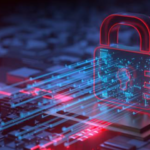The digital realm is undergoing a transformative phase with the advent of Web3 technologies. As we transition from the centralized systems of Web2 to the decentralized promise of Web3, the landscape presents both unparalleled opportunities and intricate challenges. At the heart of this evolution lies the critical aspect of security and compliance. As decentralized applications (dApps) and digital assets become more prevalent, ensuring their security and adhering to emerging regulations become paramount.
Web3, often synonymous with blockchain and decentralized technologies, promises a user-centric internet where data ownership and privacy are restored to individuals. However, with great power comes great responsibility. The decentralized nature of Web3, while eliminating single points of failure, introduces complexities in ensuring that every node, every smart contract, and every transaction adheres to the highest standards of security and regulatory compliance.
The Current State of Web3 Security:
The proliferation of digital assets, from cryptocurrencies to non-fungible tokens (NFTs), has brought forth a new era of financial and digital innovation. However, this rapid growth is accompanied by a surge in security threats. Hacks, smart contract vulnerabilities, and phishing attacks have become all too common, leading to significant financial losses and eroding trust in the ecosystem.
One of the primary challenges in Web3 security is the global nature of its operations. Transactions can originate from one country, get processed by nodes in multiple other countries, and involve participants from across the globe. This global operation, while one of Web3’s strengths, also means that security measures need to be consistent and robust across various jurisdictions, each with its own regulatory nuances.
Moreover, the immutable nature of blockchains means that once a transaction is recorded, it cannot be altered. While this ensures transparency and trust, it also means that any security breach or fraudulent transaction is permanently etched onto the blockchain. This characteristic amplifies the need for proactive security measures rather than reactive ones.
Governance, Risk, and Compliance (GRC) in Web3:
In the traditional digital landscape, Governance, Risk, and Compliance (GRC) have always played a pivotal role in ensuring that organizations operate within the boundaries of regulatory requirements while managing risks effectively. In the realm of Web3, the importance of GRC is magnified manifold.
Governance in Web3 is not just about adhering to external regulations but also involves community-driven decision-making processes. Decentralized Autonomous Organizations (DAOs), for instance, rely on community votes to make critical decisions, ensuring that the system remains truly decentralized.
Risk management in Web3 involves understanding and mitigating the unique threats that decentralized systems face. From smart contract bugs to 51% attacks on blockchains, the risk landscape is vast and continuously evolving. Smart contract security and auditing are integral components of risk management in Web3. They help in not only identifying and mitigating risks but also in building trust and ensuring the long-term success of decentralized systems.
Compliance, perhaps, is the most challenging pillar of GRC in Web3. With regulations still catching up to the rapid advancements in technology, organizations often find themselves navigating a gray area. Ensuring compliance requires staying abreast of emerging regulations, understanding their implications, and continuously adapting systems and processes to remain compliant.
In essence, GRC in Web3 is a dynamic and multifaceted domain that requires a deep understanding of both the technological landscape and the regulatory environment.
The Role of the C-Suite in Cybersecurity Compliance:
In the traditional corporate structure, cybersecurity was often viewed as a technical domain, primarily the responsibility of IT departments. However, with the increasing financial, reputational, and operational implications of security breaches, the role of the C-Suite in cybersecurity has become indispensable.
CEOs, CFOs, and other top executives are no longer just strategic decision-makers but also the custodians of organizational security. Their leadership and commitment to cybersecurity are vital in fostering a culture of security awareness throughout the organization. This top-down approach ensures that security is not just a peripheral concern but is integrated into the very fabric of the organization’s operations.
Moreover, the financial implications of security breaches, including potential fines, legal fees, and loss of business, make it imperative for CFOs to be actively involved in cybersecurity budgeting and investment decisions. They need to ensure that adequate resources are allocated to not only address current security concerns but also to anticipate and prepare for future threats.
Furthermore, with regulatory bodies increasingly holding companies (and in some cases, their executives) accountable for lapses in cybersecurity, the C-Suite’s role in ensuring compliance has never been more critical. They must stay informed about evolving regulations, understand their implications, and ensure that the organization remains compliant.
Navigating the Fragmented Landscape of Data Protection Laws:
The global nature of Web3 technologies presents a unique challenge when it comes to data protection and compliance. Different countries and regions have their own sets of data protection laws, each with its nuances, requirements, and enforcement mechanisms.
For instance, while the European Union has the General Data Protection Regulation (GDPR) that provides a comprehensive framework for data protection, other regions might have multiple, sometimes conflicting, regulations. This fragmented landscape poses significant challenges for businesses operating in multiple jurisdictions.
Multinational businesses often find themselves walking a tightrope, trying to ensure compliance with varying laws while also ensuring seamless operations. This involves understanding the specific requirements of each jurisdiction, implementing region-specific data protection measures, and continuously monitoring compliance.
Another challenge arises from the very nature of decentralized systems. Given that data on public blockchains is transparent and immutable, ensuring data privacy becomes a complex task. Organizations need to strike a balance between leveraging the benefits of decentralization and ensuring that they do not inadvertently violate data protection regulations.
Conclusion:
The promise of Web3, with its decentralized, transparent, and user-centric ethos, is undeniably transformative. However, as with any technological evolution, it comes with its set of challenges. Navigating the intricate landscape of security and compliance in Web3 requires a holistic approach, combining technological prowess with regulatory insight.
As the Web3 ecosystem continues to evolve, so will its security challenges and regulatory landscape. Organizations, developers, and stakeholders must remain agile, continuously updating their knowledge and strategies to ensure that they not only leverage the benefits of Web3 but also do so responsibly and securely.








